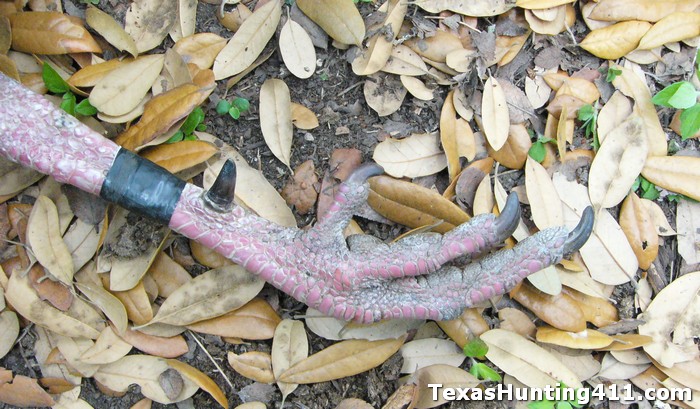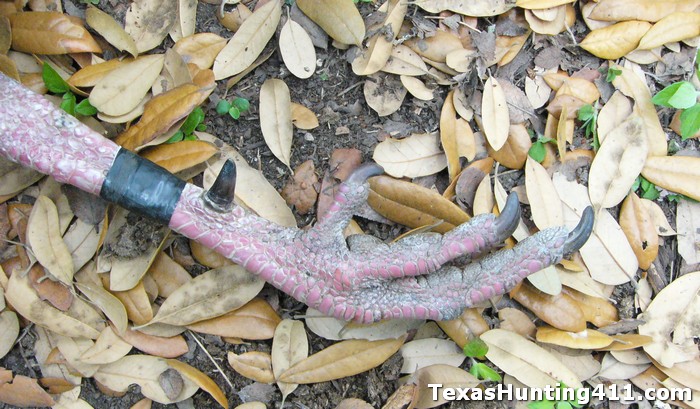The spring turkey hunting season in Central Texas should be decent despite the current, dry conditions. That’s because the the bulk of the birds making up this year’s harvest were hatched two or more years ago. Biologists with Texas Parks and Wildlife Department (TPWD) know quite a bit about Rio Grande turkeys, but they do hope to find out more about this wide-ranging birds over the next few years.
Earlier this year, a total of 50 Rio Grande turkeys were banded in Llano and Mason counties. All of these birds were fixed with an aluminum band on one leg and a colored (also aluminum) leg band on the other. Some of this Hill Country turkeys are even sporting designer backpacks and state-of-the-art electronics. They are not trying to be fashion statements, but rather these birds are forced participants in a high-tech information exchange.

Earlier this year, TPWD biologists working closely with local landowners trapped, tagged and outfitted these birds with GPS tracking devices for Rio Grande wild turkey fieldwork to identify specific habitat characteristics of nesting, brood-rearing, loafing, and roosting sites. “We will also look at dispersal rates and distance traveled between winter and summer ranges,” said Kory Perlichek, TPWD’s district biologist in Mason.
The project began by hunting for a place to catch some turkeys. TPWD settled on 3 turkey trapping sites on private land in eastern Mason and western Llano Counties. Trapping began in February using funnel traps and drop nets. Among the 50 turkeys captured, which included hens, gobblers, jakes, and bearded hens, a dozen of the hens were fitted with GPS-VHF backpack-style radio transmitters. Local landowners and biologists alike are interested in how this high-tech information can improve land management decisions.
Basic biological data was collected on all birds and leg bands were placed on each prior to release where they were trapped. Silver bands were placed on the right leg and a colored band on the left leg of each bird. TPWD phone numbers are on each leg band and radio transmitter. If anyone recovers a wild turkey with a leg band or radio transmitter, either during the hunting season or otherwise, please contact the phone number listed on the item or contact Kory Perlichek at 325-347-5691.
All turkeys with radio transmitters will be monitored once a week prior to nesting and more frequently during nesting season. Nesting season for the Edwards Plateau is typically from April to July each year depending on habitat conditions and the timing of spring green-up.
Previous work in the Edwards Plateau, where Rio Grande wild turkey populations have locally fluctuated, has not focused on populations in the Llano Uplift region. While these wild turkey populations appear stable, changes in land use practices in this area and the effect on habitat use and productivity are unknown.

I noticed a lone hen at my house near our deer feeder. This hen has a silver band on its leg but I didn’t see another band like the article says.
Location is at the end of smith lane in Junction at this address:
1064 Smith Ln
Junction TX 76849